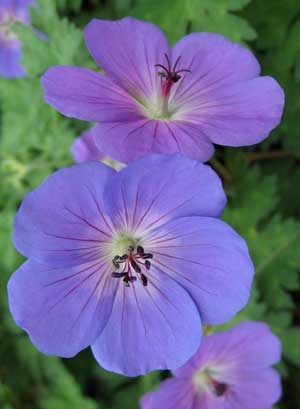
“The definition of a perennial is a plant that lives for three or four years if you don’t kill it first,” renowned gardener, author and perennials expert Stephanie Cohen joked at a recent gathering of the Horticultural Alliance of the Hamptons at the Bridgehampton Community House.
She went on to suggest that beginning gardeners stick with hardy, easy to grow plants like sedum and daylilies, because “you can’t destroy them.”
Ms. Cohen was on hand to give a lecture, “New and Underused Perennials,” to about 100 members and friends of the Alliance, a not-for-profit organization devoted to fostering the art and science of horticulture. In an accompanying slideshow, she showed photos of about 300 plants that have been introduced over the last two years.
In her lecture, peppered with playful sarcasm and jokes, Ms. Cohen said the geranium Rozanne is the top geranium in the United States today. She also showed slides of several new varieties, Blue Sunrise, Cheryl’s Shadow and Purple Pillow. The spreading Blue Sunrise, for instance, is used as a ground cover and has violet-blue flowers that are produced from summer through fall. The variety is versatile and can be grown in either full sun or part shade, but one requirement is moisture retentive, well-drained soil.
Ms. Cohen also pointed out such lesser-known plants as the new Brunnera King’s Ransom, a variegated form of the Brunnera Jack Frost that has silver green foliage with “beautiful yellow edging,” and grows in the shade. It grows 15 to 18 inches tall by 18 to 24 inches wide.
“The best thing is, the deer don’t eat it,” she said.
Another shade plant species, tierella, has two new versions, Neon Lights and Sea Foam, according to Ms. Cohen. Neon Lights has deeply cut fuzzy green foliage with highlights of black and purple patterns. The colorations, she said, are more intense during the winter months.
“If you have trees with red leaves in your garden, you can use this plant nearby to tie the garden all together,” Ms. Cohen said. Tierella needs average to moist soil.
“Good plants for attracting hummingbirds are columbines,” Ms. Cohen also said. “The newest plants are very nice compact little flowers in pink, blue ?and purple.” Also known as